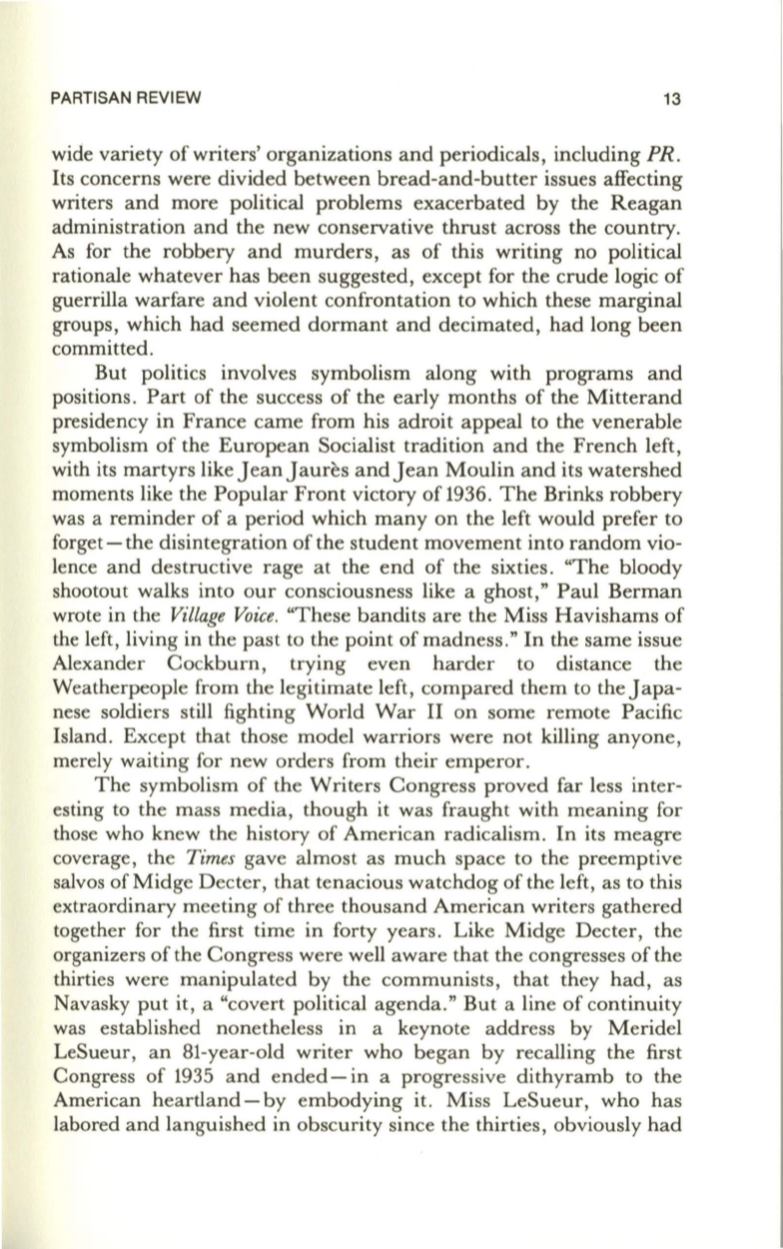
PARTISAN REVIEW
13
wide variety of writers' organizations and periodicals, including
PRo
Its concerns were divided between bread-and-butter issues affecting
writers and more political problems exacerbated by the Reagan
administration and the new conservative thrust across the country.
As for the robbery and murders, as of this writing no political
rationale whatever has been suggested, except for the crude logic of
guerrilla warfare and violent confrontation to which these marginal
groups, which had seemed dormant and decimated, had long been
committed.
But politics involves symbolism along with programs and
positions. Part of the success of the early months of the Mitterand
presidency in France came from his adroit appeal to the venerable
symbolism of the European Socialist tradition and the French left,
with its martyrs like Jean Jaures andJean Moulin and its watershed
moments like the Popular Front victory of 1936. The Brinks robbery
was a reminder of a period which many on the left would prefer to
forget - the disintegration of the student movement into random vio–
lence and destructive rage at the end of the sixties. "The bloody
shootout walks into our consciousness like a ghost," Paul Berman
wrote in the
Village Voice.
"These bandits are the Miss Havishams of
the left, living in the past to the point of madness." In the same issue
Alexander Cockburn, trying even harder to distance the
Weatherpeople from the legitimate left, compared them to the Japa–
nese soldiers still fighting World War II on some remote Pacific
Island. Except that those model warriors were not killing anyone,
merely waiting for new orders from their emperor.
The symbolism of the Writers Congress proved far less inter–
esting to the mass media, though it was fraught with meaning for
those who knew the history of American radicalism. In its meagre
coverage, the
Times
gave almost as much space to the preemptive
salvos of Midge Decter, that tenacious watchdog of the left, as to this
extraordinary meeting of three thousand American writers gathered
together for the first time in forty years. Like Midge Decter, the
organizers of the Congress were well aware that the congresses of the
thirties were manipulated by the communists, that they had, as
Navasky put it, a "covert political agenda." But a line of continuity
was established nonetheless in a keynote address by Meridel
LeSueur, an 81-year-old writer who began by recalling the first
Congress of 1935 and ended - in a progressive dithyramb to the
American heartland - by embodying it. Miss LeSueur, who has
labored and languished in obscurity since the thirties, obviously had


